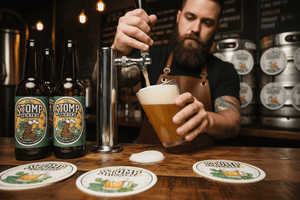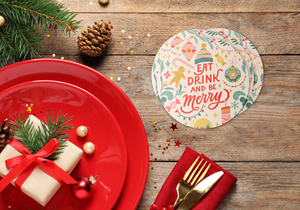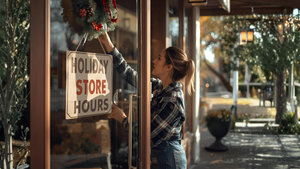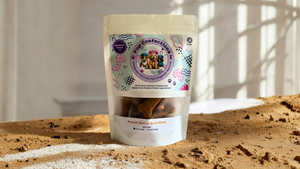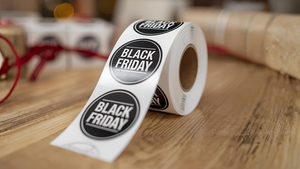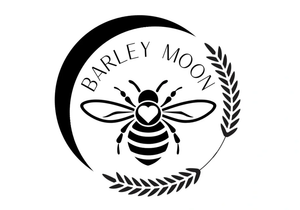How to Create Custom Soap Labels for Your Brand

You know that once folks try your soap, it sells itself.
Of course, it does! You put a ton of work and your best ingredients into your finished product, and you’re confident in the fact that it works great, smells delicious, and makes customers feel good.
Before people can start taking your soap home, though, you’ve got to find packaging that looks professional and catches the eye of your customer. While your soap is the main product, the packaging is almost as important when it comes to sales. Why?
Today, 72% of consumers say that the design of the packaging on a product influences their purchasing decisions, so choosing the right packaging for your soap is a big deal.
Fortunately, you’ve come to the right place. Today, we’re talking about how to create custom soap labels that reflect your mission, tell your story, and showcase the personality and hard work behind your soap.
Let’s get into it.
Why Custom Soap Labels Matter
When you go shopping for a new product, what are you looking for? If you’re like most consumers, chances are you want something that catches your eye and jumps right off the shelves. You want something that looks professional, unique, and high-quality.
As you might imagine, your customers want the same thing!
You know that you put your heart and soul into the soap you make, and the custom label you develop for your product should reflect that. High-quality labels provide a great first impression of your product, add value to the finished item, and promote more sales.
They’re also a great place to share important details about your soap, like the ingredients, the story behind your brand, and anything else you want your customers to know.
What You Need on Soap Labels: Regulations to Consider
In addition to being beautiful and eye-catching, your soap labels should include all the relevant information to be compliant with both CPSC and FDA regulations.
Here are a few things you’ll want to make sure you include as you create your labels:
- What it’s made of. Depending on how you make your soap, it could qualify as a “true soap,” cosmetic, or drug. Soaps that contain animal or vegetable fats or oils and lye are known as “true” soaps, according to the Consumer Product Safety Commission (CPSC), and must be labeled and sold solely for use as soap. If you use other ingredients in your soap, however, it might be technically classified as a cleanser or detergent. Make sure you look at the FDA’s regulatory definition of soap before you start labeling yours.
- Which ingredients are responsible for cleaning? To legally be considered “soap,” alkali salts of fatty acids must be the single ingredient that results in your product’s cleaning action. If the product contains synthetic detergents that cause cleaning, it’s technically a cosmetic - not a soap.
- The product’s intended use. Another thing you must include on your label is the intended purpose of your product. Does it moisturize, deodorize, treat or prevent diseases, or kill germs? In most cases, you can use “soap” on the label as long as you’re categorizing your product correctly with the FDA and CPSC.
- Additional information. You’ll also want to include the net weight of the soap, your business name and address, and any other relevant information, like your brand story, on the label of your soap.
Tips on Designing Labels That are ‘Soap’ Cool!
Once you have your finished product in hand, a custom label is the next step to create value, add personality, and help sell your product. Ready to dive in? Get busy creating beautiful, custom soap labels with these seven tips:
1. Correctly identify the product

Make sure you’re correctly identifying your product, based on the FDA and CPSC guidelines mentioned above. Spell out how the consumer should use it and what the product’s benefits are.
In the example above, Oars + Alps specifies what the product is (bar soap, in this case), and tells consumers how it’s meant to be used - as a moisturizer/cleanser. These seem like simple details, but they’re important for compliance purposes. They also help your customers sort through lots of soap options and find the one that’s right for them.
2. Rep your business

Include the name, address, and tagline of your business on your soap label. Don’t be afraid to get a little playful here! Again, customers want products that are unique and fun, so telling some of your story on the label is a great way to draw people in and help them get a sense of your brand.
In the example above, Granola Girl Skincare labeled their soap as “Hippie Bar” and is scented with patchouli oil. The logo is a playful reference to an earth-loving flower girl, and the entire packaging comes off as fun, free-spirited, and lighthearted. It’s a great example of how to make your brand speak on your label.
See how you can play with your packaging to help your brand personality come through.
3. List your ingredients

People want to know what's in the products they’re purchasing, especially when it comes to personal care items like soap.
List your ingredients using common industry words like Buck Naked Soap Company above has done - lavender and rosemary. Customers understand what those ingredients are, and know that both are generally thought of as skin-soothing, relaxing ingredients.
Finally, list all ingredients in the order of the predominance of their weight – with the ingredient used in the greatest amount always listed first.
4. Share the HOW behind your product

Just like customers want to know what’s in their products, they want to know how those same products were made. In addition to making your company as transparent as possible, adding this information can help people connect to your brand. Include as many details as you can about the unique aspects of your process, and any special care you put into creating the soap.
For inspiration, check out how Dirty Knees Soap Co. beefed up its labels with information about charcoal, a key ingredient in the soap. Specifically, the label plays with the idea of charcoal as a cleansing agent, and advertises that this soap will “leave you clean as a whistle and save you a trip to the confessional.”
This description serves a few purposes: it showcases one of the main ingredients (Charcoal), and also allows the soapmaker’s personality to come through. The soap is clearly designed to target male consumers, and its rugged, straightforward packaging reflects that.
5. Use a label material that complements your product

Is your soap sleek and organic? If that’s the case, then look for a high-gloss finish that screams “quality!” What if your product is quirky and homespun? You should go for a more rustic label vibe that reflects the grassroots nature of your product.
Think about which label materials will catch your customers’ eyes, and how they’ll hold up during packing, shipping, distribution, and display. The right label material for your product is one that enhances and complements your finished product and adds value in the end.
In the image above, Beekman 1802 soap is fully wrapped in a thick, artisan paper with a botanical print that reflects the soap’s ingredients: goat milk, rosemary, and mint. The immediate impression is of an organic, skin-friendly, high-quality product that looks desirable and elegant.
6. Play with size and shape

The sky's the limit when it comes to the size and shape of your soap labels! Look into die cut soap labels for unique shapes and cutouts, adding visual interest to your product and helping it pop right off the shelves and into your customers’ carts.
Check out Just Like Jane soap above, which uses a box-style packaging, ribbon, and full-printed wrapper to create a unique visual experience. Chances are, if you were browsing soap options, this one would look different than anything else around it and you’d reach for it to get a closer look. That’s EXACTLY what you want your customers to feel when they lay eyes on your soap packaging.
Get Started with Stomp
Get busy making your beautiful custom soap labels today! Stomp offers a wide selection of high-quality, custom label designs that are perfect for enhancing your product. Ready to get started? Contact our printing experts today!
- Marketing Team

